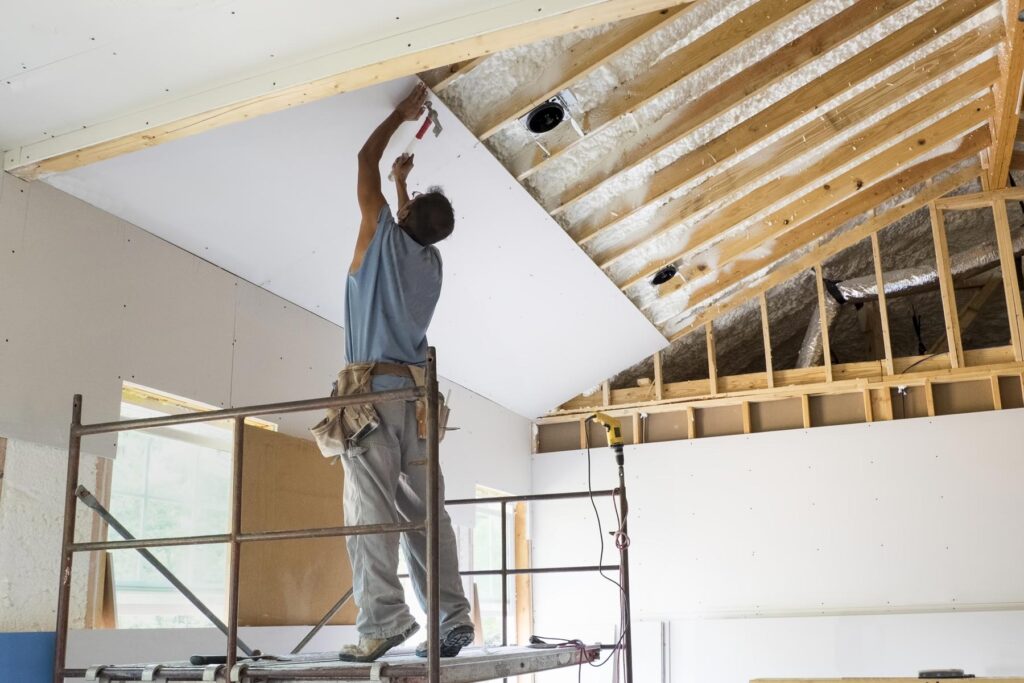Outstanding Sheetrock Repair Fort Worth to Improve Your Home
Outstanding Sheetrock Repair Fort Worth to Improve Your Home
Blog Article
Drywall Installment Facilitated: Tips for Perfect Results
Drywall installment is typically regarded as a difficult task, yet with the ideal approach and understanding, it can become a workable endeavor. Grasping strategies for cutting, hanging, and completing drywall can significantly affect the end result.
Selecting the Right Products
Picking the suitable products for drywall installment is essential to achieving a resilient and cosmetically pleasing finish. sheetrock repair fort worth. The primary element, drywall sheets, commonly been available in numerous densities, with 1/2-inch sheets being typical for interior walls. For areas calling for additional wetness resistance, such as shower rooms or cooking areas, think about utilizing environment-friendly board or cement board, which are specifically created to stand up to moisture

In addition, picking the appropriate bolts-- either nails or screws-- is necessary for protecting the drywall to the framing. Drywall screws are typically favored for their holding power and decreased risk of standing out. Last but not least, take into consideration the complements such as primer and paint, which not only improve the appearance but also shield the drywall from dampness and wear.
Preparing the Setup Area
Before starting the drywall installation process, it is important to prepare the installation location extensively. A clean work space lessens the threat of damages to existing items and enables for reliable movement during installment.
Following, examine the wall surfaces and ceiling for any flaws, such as splits, holes, or mold. Address these problems ahead of time; patch any kind of problems and allow adequate time for fixings to dry. Furthermore, make certain that electrical outlets, switches, and plumbing are effectively placed and accounted for, as this will affect drywall positioning.
Take into consideration the ecological problems. A stable temperature and moisture degree are crucial for optimum attachment and efficiency of the drywall materials. Utilize a dehumidifier or heater to create suitable problems. if necessary.
Trimming and Hanging Drywall
The trick to reliable drywall installment hinges on the accurate cutting and hanging of the panels. Begin by measuring the room properly, thinking about any type of obstructions such as electric outlets or home windows. Utilize a straight edge and an utility blade to rack up the drywall along your measurements, after that break it along the scored line for a clean break. For even more complex cuts, such as around outlets, a drywall saw can be utilized for precision.

Always function from the top down and left to right, making sure that you maintain a staggered pattern to improve security. Correctly hanging the drywall establishes the structure for a smooth surface, inevitably resulting in premium lead to your drywall job.
Insulation and Mudding Techniques
While appropriate cutting and dangling of drywall establishes the stage, the following crucial step entails understanding taping and mudding techniques to make sure a smooth coating. Insulation is vital for enhancing joints and preventing fractures; it includes installing tape right into the used joint compound (mud) Start with a top quality fiberglass or paper tape, using the tape over the joint and pushing it into the wet mud using a taping knife, making sure no air bubbles stay.
As soon as the tape remains in place, apply a thin layer of joint compound over the tape, feathering the edges to produce a smooth shift to the drywall surface. Enable this layer to dry totally prior to sanding it gently to get rid of blemishes. Repeat this procedure, using added layers of mud as essential-- commonly two to three my company layers-- while gradually widening the application location with each layer to attain a smooth appearance.
After the last coat dries out, sand the surface area with a fine-grit sandpaper till smooth. drywall contractor. Remember to wear a mask during sanding to prevent inhaling dust bits. Understanding these taping and mudding strategies is important for attaining a Continued professional-quality surface in your drywall setup
Finishing Touches for Excellence
Attaining a perfect drywall setup surpasses taping and mudding; it finishes in the completing touches that raise the overall look. These last steps are important in guaranteeing a professional-grade finish that boosts the appearances of your room.
Begin by fining sand the dried joint substance to produce a smooth surface area. Utilize a fine-grit sandpaper and a sanding block or post sander for optimal control. Pay certain interest to edges and edges, as these areas tend to need even more careful work. After fining sand, wipe down the wall surfaces with a damp towel to eliminate any dust fragments, making sure a clean surface area for paint.
Following, use a primer especially developed for drywall. This action is important, as it aids seal the joint compound and supplies an uniform base for the topcoat. When the guide dries, examine for any type of blemishes, and touch up as required.
Verdict
Finally, effective drywall installment depends upon the cautious option of materials, complete prep work of the installation area, and exact implementation of reducing and hanging techniques. Mastery of taping and mudding procedures is essential for achieving a smooth surface. Furthermore, focus to ending up touches, including priming and touch-ups, ensures a professional-grade result. By adhering to these standards, the quality of workmanship can be considerably improved, adding to the total visual and capability of the room.
Drywall installment is usually regarded as a daunting job, yet with the ideal method and knowledge, it can become a convenient undertaking.Picking the proper products for drywall installment is crucial to attaining a sturdy and visually pleasing surface.Before starting the drywall setup process, it is important to prepare the installment location completely. Mastering these taping and mudding strategies is important for accomplishing a professional-quality finish in your drywall installment.
In final thought, successful drywall installation pivots on the cautious read the article selection of products, extensive preparation of the installment area, and precise implementation of cutting and hanging strategies.
Report this page